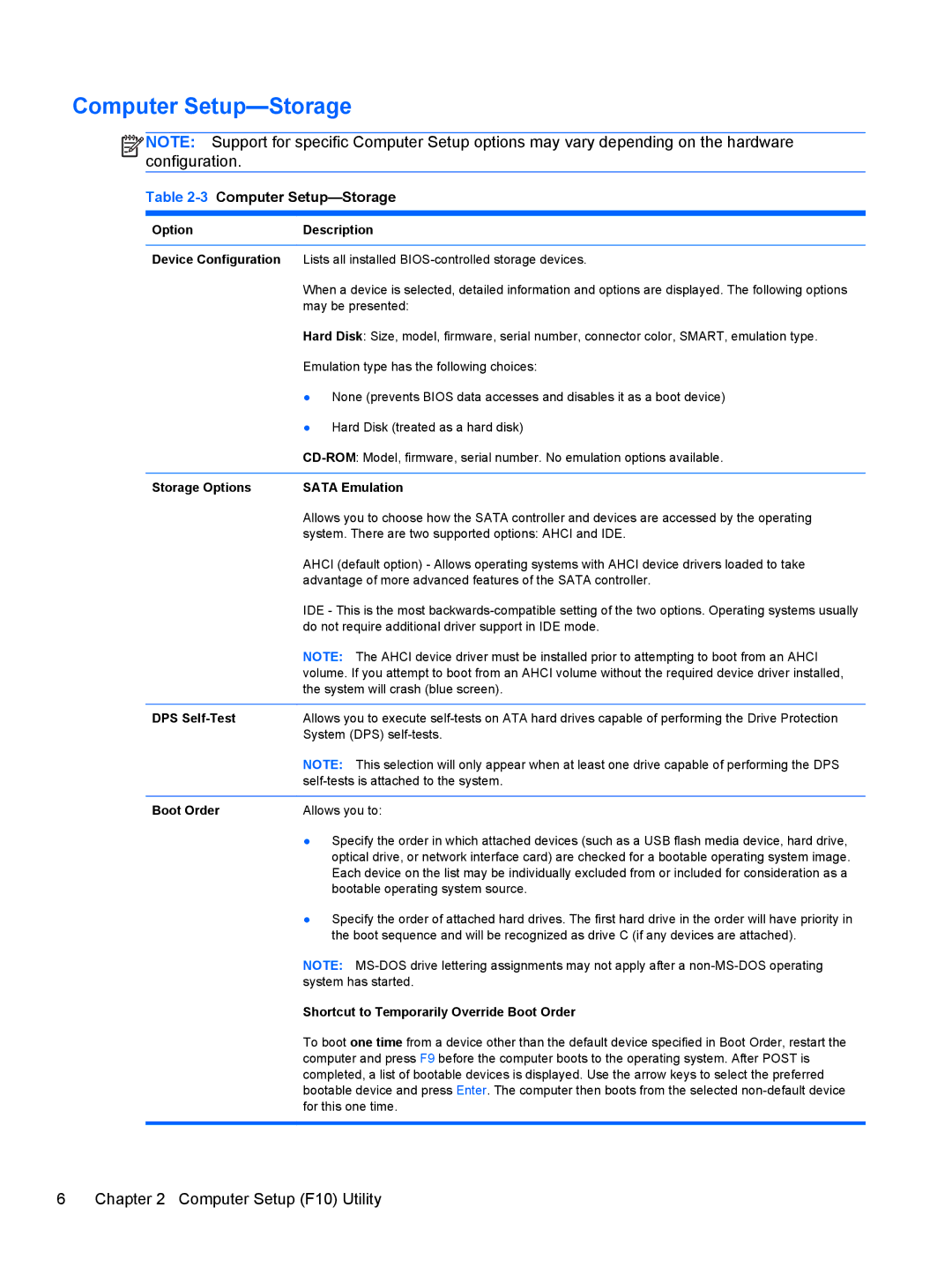
Computer Setup—Storage
![]()
![]()
![]()
![]() NOTE: Support for specific Computer Setup options may vary depending on the hardware configuration.
NOTE: Support for specific Computer Setup options may vary depending on the hardware configuration.
Table 2-3 Computer Setup—Storage
Option | Description |
|
|
Device Configuration | Lists all installed |
| When a device is selected, detailed information and options are displayed. The following options |
| may be presented: |
| Hard Disk: Size, model, firmware, serial number, connector color, SMART, emulation type. |
| Emulation type has the following choices: |
| ● None (prevents BIOS data accesses and disables it as a boot device) |
| ● Hard Disk (treated as a hard disk) |
| |
|
|
Storage Options | SATA Emulation |
| Allows you to choose how the SATA controller and devices are accessed by the operating |
| system. There are two supported options: AHCI and IDE. |
| AHCI (default option) - Allows operating systems with AHCI device drivers loaded to take |
| advantage of more advanced features of the SATA controller. |
| IDE - This is the most |
| do not require additional driver support in IDE mode. |
| NOTE: The AHCI device driver must be installed prior to attempting to boot from an AHCI |
| volume. If you attempt to boot from an AHCI volume without the required device driver installed, |
| the system will crash (blue screen). |
|
|
DPS | Allows you to execute |
| System (DPS) |
| NOTE: This selection will only appear when at least one drive capable of performing the DPS |
| |
|
|
Boot Order | Allows you to: |
| ● Specify the order in which attached devices (such as a USB flash media device, hard drive, |
| optical drive, or network interface card) are checked for a bootable operating system image. |
| Each device on the list may be individually excluded from or included for consideration as a |
| bootable operating system source. |
| ● Specify the order of attached hard drives. The first hard drive in the order will have priority in |
| the boot sequence and will be recognized as drive C (if any devices are attached). |
| NOTE: |
| system has started. |
| Shortcut to Temporarily Override Boot Order |
| To boot one time from a device other than the default device specified in Boot Order, restart the |
| computer and press F9 before the computer boots to the operating system. After POST is |
| completed, a list of bootable devices is displayed. Use the arrow keys to select the preferred |
| bootable device and press Enter. The computer then boots from the selected |
| for this one time. |
|
|
6 | Chapter 2 Computer Setup (F10) Utility |
